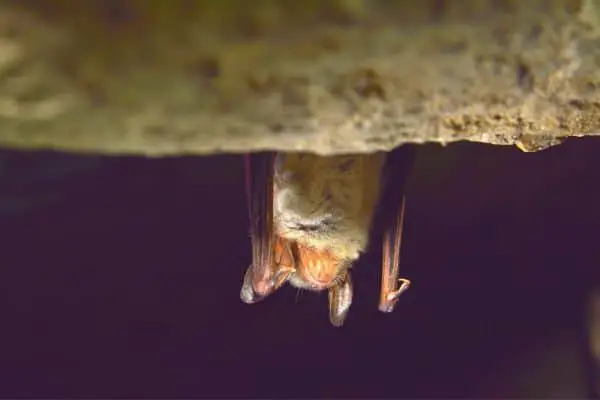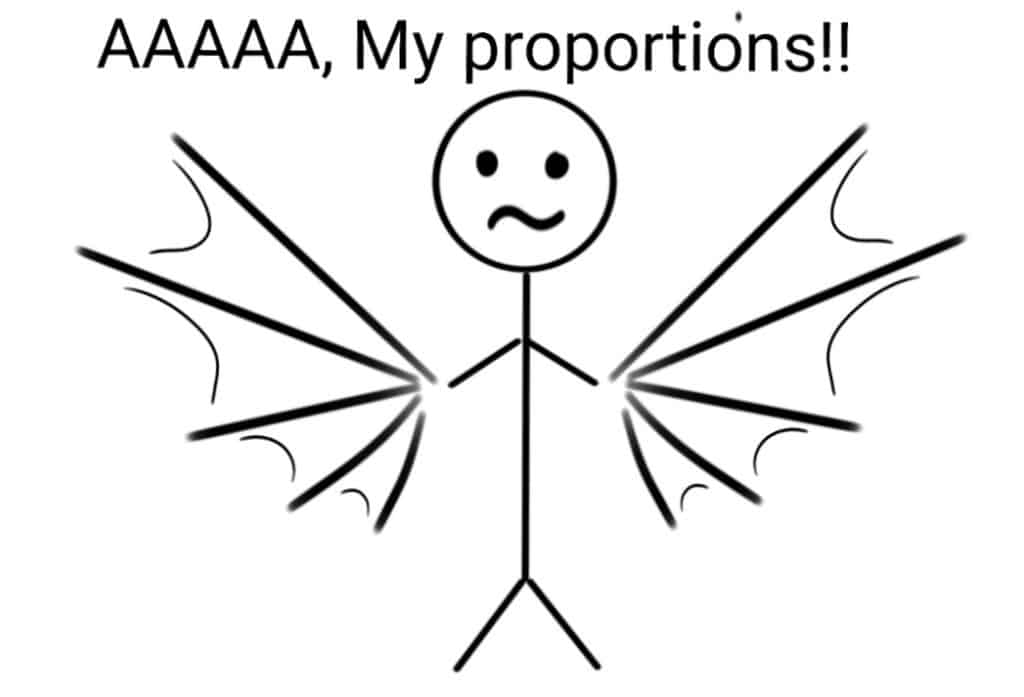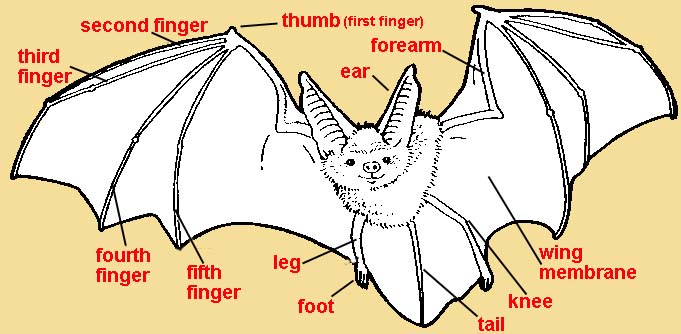2 Bat Science Experiments and Activities for All Ages – Teach Echolocation & Anatomy!
What makes bats so special isn’t just Batman, Batmobile or Halloween. It’s that they’re the only mammal that can fly!
Every Halloween, we get to decorate our houses with these flying spooksters. And every once in a while kids will ask why their wings are like that, why they squeak like that, or whether they really suck blood as vampires do.
Well, there’s no better way to teach your children about bats than with some nice little STEM activities and experiments.
Today we’ll offer a couple of ways to teach your kids talk about bats, their anatomy and nature, how they feed, how they sleep, and how they fly!
Related Post: 3 Amazing Halloween Arduino Projects for Teens
Interactive Bat Experiments and Activities for All Ages
Get your lab coat and start the experimentation!
1. Bat Echolocation With the Doppler Effect

Age range: 10-18 ages | Middle School & High School
If turtles use magnetism to navigate, bats use sound! But not just any kind of sound.
Bats as animals have adapted to living in darkness. Their eyesight is very similar to human eyesight. Which means it basically sucks in total darkness, so they have to fully rely on their hearing.
With their developed ears, they are fully capable of finding food, avoiding obstacles when flying, and even finding mating partners. This natural occurrence is called echolocation, and it’s present in many animals around the globe like bats, dolphins, whales, and even long-horned narwhals.
Bats use different frequencies ranging from 9kHz to 200kHz. During their flight they produce soundwaves. Thanks to the Doppler effect, the sound waves change frequency, and return to them. In the end they are able to break on through the other side without getting hurt.
This experiment will help you understand echolocation with the use of the Doppler effect, and a kids’ toy.
Materials needed:
- Battery-operated toy car;
- A 9-volt battery;
- A 9-volt buzzer/ frequency generator phone application;
- Connectors (if using a buzzer);
- A blindfold;
- A camera;
- A timer;
- Crepe tape;
- A volunteer for helping.
Procedure:
- Wire the buzzer to the battery.
- Tape the battery and buzzer to the car.
- Set a timer to 5 minutes.
- Prepare and turn on the camera.
- Put on the blindfold.
- Have your helper drive the toy car near you, and listen closely.
- Try to explain where the car is moving. Use simple directions like left, right, etc.
- After 5 minutes, take off your blindfold and turn off the camera.
- Review the footage, and discuss.
During the discussion, ask yourself a few questions:
- How many times were you right about the location of the toy?
- How long did it take you to adapt to your sense of hearing?
The best way to modify this experiment is to think outside of the box and be creative. Change your environment: you can test it out in a quiet room or somewhere outside with external factors present.
You can try it out with multiple cars, a toy helicopter, or have your friend sing to you while moving around you.
The whole point of this experiment is to experience echolocation and the doppler shift present in moving waves and obstacles.
To sum it up, humans have reliable senses in nature. We have fully developed eyes capable of showing us our surroundings in broad daylight. But when it comes to moving around during the night, we might face a lot of difficulties because we are not used to using our sense of hearing as a primary sense for locating food, people and places.
If we cover our ears, we would be capable of moving around. But if we cover bats’ ears, they will end up hitting a rock in the cave they’re living in or stay without food for a longer period of time.
2. Bat Anatomy Magic Slider Card
This STEM arts ’n’ crafts activity is for all ages!
Their anatomy may seem very normal: they have a body, they have legs, and they also have wings.
But how do they have wings if they’re mammals?
The thing is, they don’t.
Things aren’t always what they look! Bats have fully developed arms with fingers, covered by two layers of elastic skin which are still being called wings for easier understanding. Their fingers are the longest part of their body. If we calculated their proportions and applied them to humans or other animals, we would end up with fingers longer than 60% of our body. Can you imagine that?

The best way to teach your kids about the anatomy of bats is to create an interactive slider card, revealing the bone structure of a bat.
Materials needed:
- 3.9in x 11.8in dense colored paper;
- 3.3in x 5.9in white paper;
- 3.7in x 5.7in clear plastic film;
- 0.2in x 3.5in thin white cardboard;
- 0.2in x 3.4in thin white cardboard;
- 2 0.2in x 5.5in thin white cardboard;
- Gluestick;
- Black permanent marker;
- Drawing materials of choice(colored pencils, markers, watercolors, etc);
- Scissors;
- Measuring tape.
Procedure:
- Fold the colored paper in half.
- Draw a 3.1in x 5.1in rectangle in the middle of one page, to create a border, and cut it out. You should be left with one whole side, and a border.
- Cut out a 3.4in opening in the middle of the folded part. Which will be used for pulling out the white paper and revealing the drawing.
- Prepare a sketch of a bat similar to the one right below. (You can label their bones if you think that’s necessary.)

- Draw the bat on the colored piece of paper and be careful, it should not be covered by the border! After folding, the border should be right on top of the drawing.
- Glue the clear plastic film on the inside of the border. There should be enough space on the border for you to glue the plastic film.
- Take the permanent marker and trace the drawing on the clear plastic film.
- Take the thin 0.2in x 3.4in cardboard and glue it to the white paper. The cardboard should stick out a bit, and it will stop the white paper from getting completely pulled out from the opening.
- Glue the remaining thin cardboards on the inside of the border.
- Place the white paper in the middle and glue the cardboard border to the colored paper.
You should be left with a magic slider card revealing a drawing of a bat every time you pull out the white paper.
Even though this is not a science related activity, it gives freedom to youngsters to use different measuring methods and apply them to creative arts and crafts activities.
Creative activities can benefit children that are still improving their motor skills, creativity and interest in science. Interactive cards can help kids explore anatomy, how the bones and different tissues work through drawings, pictures, and animations.
This activity is very flexible. You can draw specific body parts, complete skeletons, or cute sketches of bats, that’s up to you! There’s total freedom to experiment and even compare their anatomies with sugar gliders or squirrels for example.
You can use this magic slider card for learning other STEM topics like astronomy, biology, biochemistry, or you can use it as a greetings card and gift it to people.
Bonus Discussion Ideas
Bats are one of the most misunderstood animals on Earth. We see them as scary, blood-sucking creatures, but in fact they are just flying puppies who like flower nectar, fruits. Plus and they help us get rid of creepy-crawly insects.
(Still, even if you think they are cute, don’t do the above. I’ll explain why later on.)
Bats are beneficial to humans and nature, they affect our agriculture, they help with pollination, and the dispersion of seeds. In most cases, we don’t have direct contact with bats, but they can hear us clearly and they avoid us on purpose!
In case you see a bat on the ground near you, you should know that something may be wrong with it, so call your local animal control center and let them deal with it.
Our relation to bats is minimal to none, but throughout the years, we have destroyed some of their living locations like forests or caves, and due to our involvement they are becoming endangered.
More than 200 species of bats are endangered and need our help!
So, the more we educate ourselves about bats, the bigger the chance of their survival!
Even if you get bitten or scratched by a bat, don’t worry! You won’t become the next Count Dracula.
Frequently Asked Questions
Are Bats Related to Flying Squirrels?
Even though both species are mammals and they have their similarities, bats aren’t related to flying squirrels.
Bats are part of the Chiroptera order, and they have their order while flying squirrels are part of the Rodentia order and are considered rodents.
On the other hand, bats are closely related to flying lemurs (Dermoptera order), but they don’t have many similarities.
The difference between bats, flying squirrels, and flying lemurs is that flying squirrels and flying lemurs cannot fly, they glide from tree to tree, while bats are the only mammals capable of flying.
What Will Happen if My Child Gets Bitten by a Bat?
Even though bats are not that dangerous to humans, they can cause serious health problems.
Bats carry a vast variety of bacteria and viruses on them and can cause infections and illnesses in humans. The most common bacteria and viruses carried by bats are Rabies, Salmonella, Yersinia, Histoplasma, and various external parasites.
Complications may occur only if the bat is infected with the aforementioned bacteria and viruses, but it’s best to get medical care after being in contact with a bat.
After being bitten/scratched by a bat or after ingesting bat saliva visit a hospital as soon as possible.
Are Bats Dangerous to Pets?
Although bats are known carriers of rabies, they’re not dangerous if left alone and they tend to avoid confrontation, as should you.
If a bat flies into your house, open up your windows and wait until it flies out. Do not, under any circumstance, come close to it, or touch it. Bat repellents can also help ward them off, but they’re a protected species and you may need a federal permit for using repellents.
However, when pets are in question, instead of the unlikely chance of rabies from bat bites, the only thing you need to worry about is bat droppings.
Bat droppings, or guano, contain parasites and the Histoplasmosis fungus that poses a serious respiratory threat to you and your pets. Guano removal requires professionals, so please consult an expert to prevent exposure.
What’s the Bats’ Role in the Ecosystem?
Bats are great pest controllers, pollinators and fertilizers!
Bats need more than 1000 bugs per hour so they create nests in bigger trees with decaying barks, natural indentations, and lots of fruits. The decaying bark, and fermented fruits attract different kinds of insects and creates a possibility for bats to find food without moving around.
Some bats prefer eating flower nectar, so when they feed and mingle around blooming flowers, the hairs on their skin collect pollen which gets dispersed around nature and pollinates a vast variety of flowers.
Bat droppings (guano) contain a high amount of minerals which are very beneficial to a lot of plants. Bat excrement is used to enrich the soil and produce highly nutritious humus for growing vegetables.







